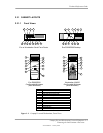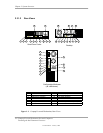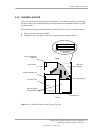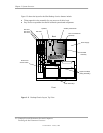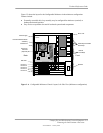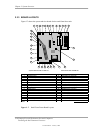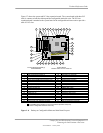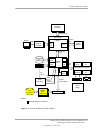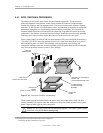
Chapter 2 System Overview
2.4 SYSTEM ARCHITECTURE
The Compaq Evo and Workstation systems covered in this guide feature an architecture based on
the Intel Pentium 4 processor and the Intel 845 chipset (Figure 2-9). These models use either
PC133 or DDR (PC266) SDRAM for system memory, provide AGP 4X graphics support, and
include PCI bus expansion capability.
The Intel 845 chipset includes the 82845 MCH designed to support the Pentium 4 processor with
an FSB speed of 400 MHz. The 82845 MCH also includes an SDRAM controller supporting up to
three PC133 DIMMs or two DDR DIMMs, depending on model configuration.
All systems feature AC’97-compatible audio subsystems and include a microphone input, a line
input and headphone and/or line output. The Small Form Factor system features Compaq Premier
Sound components while Desktop and Configurable Minitower systems provide a business audio
solution.
The 845 chipset also includes the 82801BA I/O Controller Hub (ICH2) that integrates two IDE
controllers with ATA100 support, two USB interfaces, and a PCI bus controller. Also integrated
into the 82801BA is an 82562 network interface controller. An SMC LPC47B367 Super I/O
Controller provides serial, parallel, keyboard, mouse, and diskette drive interface functions.
All models covered in this guide support ATA100-type hard drives. Select Compaq Workstation
W4000 models feature a SCSI PCI adapter controlling a Wide Ultra3 SCSI hard drive.
Below is a matrix defining the architectural differences based on form factor and series.
SFF Desktop Configurable Minitower
Series Type Evo/Workstation Evo Evo Workstation
SDRAM Memory Speed SDR SDR SDR SDR/DDR
Audio subsystem type Premier Sound Business Business Business
Front panel audio ports Standard Optional Optional Standard
Front panel USB ports Standard Optional Optional Standard
PCI slots 2 3 5 5
Hard Drive Type ATA100 ATA100 ATA100 ATA100 or SCSI
SDR = Single data rate
DDR = Double data rate
Compaq Evo and Workstation Personal Computers
Featuring the Intel Pentium 4 Processor
Second Edition – January 2003
2-12




